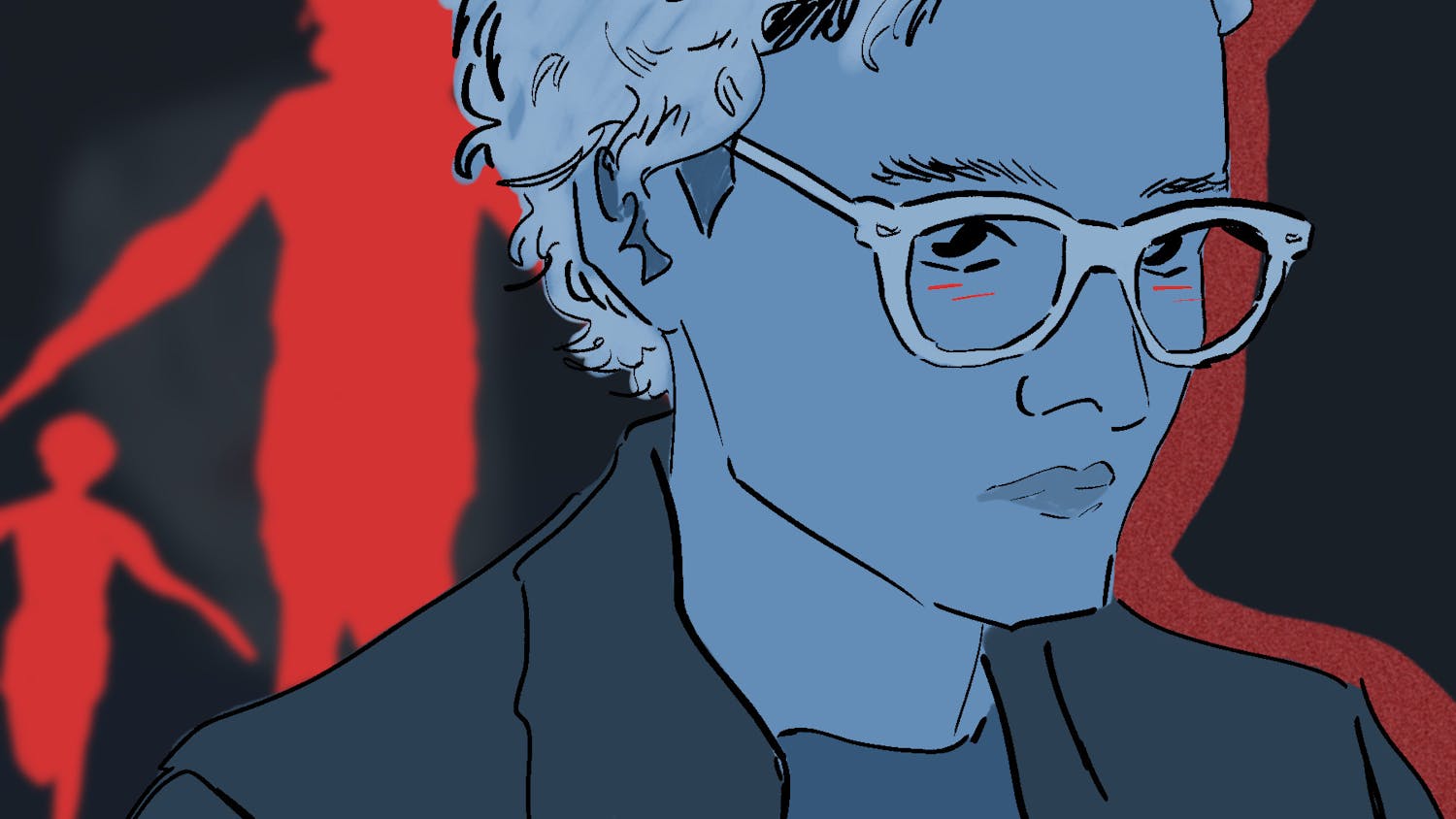"What is it?!" a brown-haired girl in Patagonia exclaimed with her face pressed against the glass, "I don't get it!"
"Oh," she shrugged in exasperated distaste, "It's aaart."
That's right folks -- Christo's saffron show in Gotham City maybe over, but for now, Dartmouth's very own Hopkins Center features the ever divisive, ever incendiary "Butcher's Bargain."
"The Butcher's Bargain," by Krista Oopik '05 has received much attention in the past week. The sculpture is a meat cooler with a life of its own. Walking down the corridors of the Hop, to the right of the Hinman Boxes the familiar buzz of neon lights heralds the presence of this relatively controversial (by Dartmouth standards) meat-filled refrigerator.
Oopik, a senior studio art major, reworked the signage and exterior of an old Coca-Cola refrigerator. She varnished different cuts of meat with three coats of epoxy -- a clear varnish -- and wrapped the meats in mink hides. When the meat, now approximately two months old, started to rot beneath the layers of epoxy, Oopik painted back onto the surfaces in order to enhance the visceral effect of the cutlets. Everything from turkey thighs to halibut were placed on Styrofoam trays, shrink wrapped and labeled with their appropriate and actual nutritional information, such as "Chicken Filet, Epoxy and Mink Hide." The refrigerator is placed next to the Hinman Boxes across from the telephone booths where the artist likes to hide, eavesdrop and document the controversial discourse on her piece.
"Its disgusting! What is this? Is this art?!" dumbstruck Hop patrons exclaimed.
Oopik had an answer: "For this contained installation piece I took a luxury fur hide and re-associated it with meat, but with a consumerist mentality I wanted to emphasize the outrageousness of American consumerism in a visceral and immediate way. On one hand I exploit the grotesqueness of reuniting two naturally intimate materials that have been entirely disassociated in the product market. On the other hand, I think there is beauty in the presentation of this unexpected product in a familiar environment."
This piece is unusual because controversial, contemporary and public art is rarely seen at Dartmouth. While this winter increased attention was paid to public art in the work of Kiku Langford '06, on the whole the campus is almost entirely void of contentious, confrontational and public art.
Oopik said, "I think this work is important for the Dartmouth community, I think it questions them and makes them think, 'What is art today?' Yes, you can pass by the Jaffe-Friede and Strauss Galleries and see art, but it doesn't necessarily make people talk and think about art."
Student work can be seen in the corridors of the Hop, viewed through select exhibitions on the walls of the Collis Caf, hung in NovArt in Novack Caf and displayed at AREA in the Top of the Hop. And while these few exhibition spaces are extremely important, each is equally limited by the administrators in control of these spaces. Even AREA, the most avant-garde of the batch is censored by the strict Hopkins Center guidelines.
And yet, despite the unorthodox nature of Oopik's request, the studio art department and Hopkins Center directors received the idea with open arms. Oopik credited Lewis Crickard, director of the HOP, studio art professor Gerald Auten and studio art department chair Colleen Randall with the support needed to make the project fly. Oopik said, "In my mind I had a specific site for the work and in order for it to be realized, I as an artist had a job to get it to that site."
With the artist out of town for the weekend, the problem at hand was the band of unplugging hooligans who in an outright act of artistic anarchy, continued to unplug the sculpture, turning the neon light dim and unknowingly releasing the smells of two-month-old meat slabs into the halls of the Hop. Yet, with the help of fellow art students, crisis was averted, and public art and the more-pleasing smell of breakfast sandwiches continued to waft through the halls in peace. Oopik, noting the hilarity of the situation, commented, "If someone threw a brick through it, it would be all the more exciting."
Oopik continued, "As soon as the work is made and you put it in a public space it takes on a life of its own; you can maintain it, but it is all the more interesting when it is controversial and it turns eyes and heads."
With a major concentration in sculpture, Oopik holds a particular interest in materiality and the human body. A native of Charlotte, North Carolina, Oopik attended St. Paul's school which she credits for much of her early art training. Oopik was accepted to the visual art program at the Rhode Island School of Design but decided to pursue a liberal arts degree instead. Oopik spent her first undergraduate year at Davidson College in North Carolina and transferred to Dartmouth in her sophomore year.
The artist is currently influenced by the work of contemporary artists Damien Hirst, Paul Thek, Ann Hamilton and Matthew Barney. While these artists are notable for their conceptual and often shocking work it is impossible to ignore the influence of fashion and textiles on Oopik's work. Inspired by the fashions of Issey Miyake and Emilio Pucci, Oopik explains that in a perfect world she would create textiles for haute couture designers.
"The Butchers Bargain" breaks the mold of art at Dartmouth. It is a public piece that is stationed in such a place where students, faculty and community members alike must come in contact with the work. They may not like it, they may not understand it, they may want to continually unplug it, but regardless it is a work of art that they are forced to interact with because its unusual presence has invaded their halls and god forbid, forced them to think.



